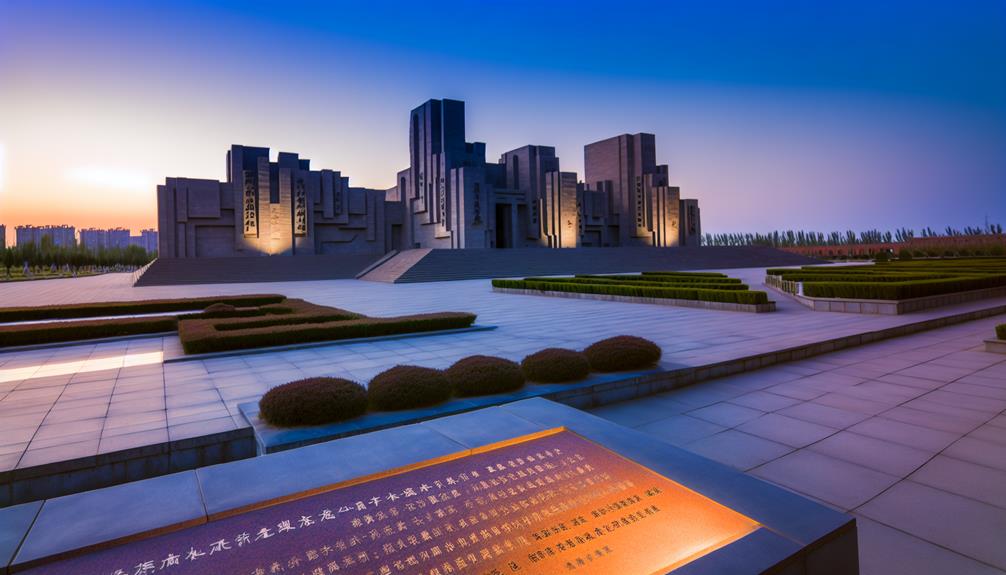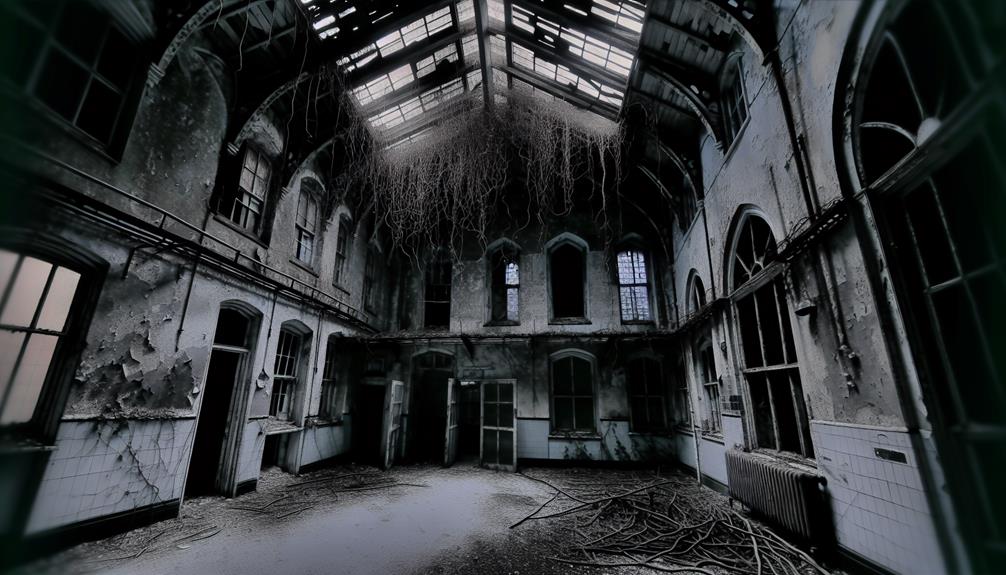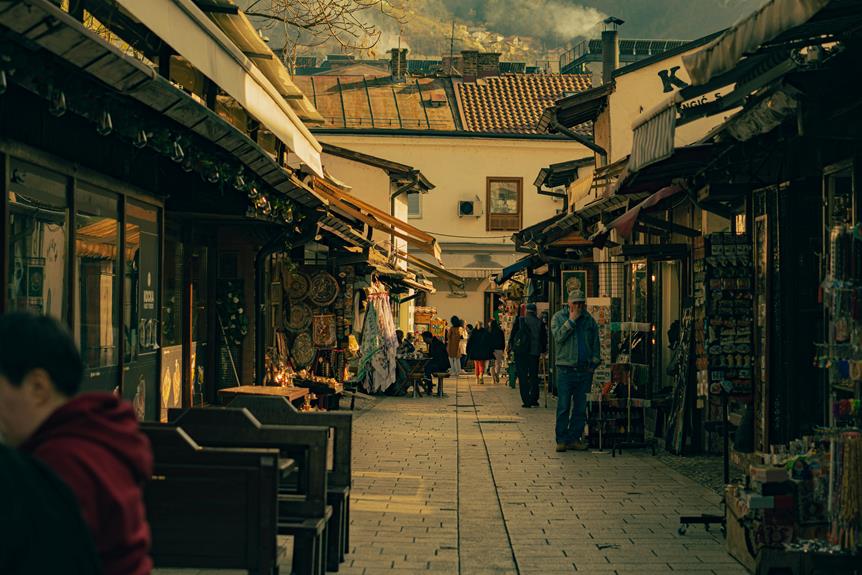The Tangshan Earthquake Memorial serves as a profound evidence to the unwavering spirit of a community shattered by tragedy. Its significance goes beyond mere commemoration, offering a glimpse into the deeply ingrained resilience that allowed a city to rise from the rubble and rebuild. As visitors traverse the memorial's grounds, they are met with a tapestry of stories waiting to be unraveled, each thread weaving a narrative of survival, loss, and ultimately, hope. This place of remembrance beckons visitors to witness not just the history of a devastating event but the enduring legacy of a city that refused to be defined by calamity.
Key Takeaways
- Tangshan Earthquake Memorial symbolizes journey from destruction to healing.
- Architecture reflects earthquake's power with angular shapes and red bricks.
- Survivor narratives showcase human endurance and resilience post-catastrophe.
- Commemorative events honor lives lost with tributes, art, and solemn ceremonies.
- Tangshan's resilience today exemplifies strength, community support, and disaster preparedness.
Historical Context of Tangshan Earthquake
During the early hours of July 28, 1976, the city of Tangshan in Hebei province, China, was struck by one of the deadliest earthquakes in recorded history. The causes of this catastrophic event can be attributed to the complex tectonic activities in the region, specifically the movement of the Eurasian Plate and the Pacific Plate along the Tangshan Fault. The earthquake, measuring a magnitude of 7.6 on the Richter scale, resulted in the loss of over 240,000 lives and the displacement of millions of people. The aftermath of the disaster was devastating, with the city reduced to rubble and chaos, leaving survivors grappling with the physical and emotional toll of the tragedy.
The Tangshan earthquake had a profound impact on the region, leading to a significant reconstruction effort and a renewed focus on earthquake preparedness and infrastructure resilience. The Chinese government implemented stringent building codes and invested in seismic monitoring systems to mitigate future risks. The disaster also highlighted the importance of international cooperation in disaster relief efforts, with countries around the world offering aid and support to the affected region. The memory of the Tangshan earthquake continues to shape the city's identity, with the earthquake memorial standing as a proof to the resilience and strength of its people in the face of adversity.
Architectural Symbolism and Design
The architectural symbolism and design of the Tangshan Earthquake Memorial serve as a poignant reflection of the resilience and commemoration ingrained in the aftermath of the devastating seismic event of 1976.
The memorial's symbolic representation is evident in its layout and structures. The main entrance, flanked by two towering walls, symbolizes the force of the earthquake that tore through the city, while the pathway leading to the central plaza represents the journey from destruction to healing.
The architectural significance of the memorial lies in its use of materials and shapes to convey meaning. The red bricks used in the construction pay homage to the traditional building materials of Tangshan, emphasizing a connection to the local history and culture. The angular shapes and sharp edges of the structures evoke a sense of instability and chaos, mirroring the destructive power of the earthquake.
In contrast, the carefully placed green spaces and tranquil water features offer a sense of peace and hope for the future. Overall, the architectural symbolism and design of the Tangshan Earthquake Memorial create a powerful and moving tribute to the resilience of the people who survived the tragedy and the memory of those who were lost.
Stories of Survival and Loss
Amidst the ruins and remnants of the Tangshan earthquake, narratives of survival and profound loss emerge as evidence to the human spirit's endurance in the face of catastrophic upheaval. The stories of survival that have surfaced from the devastation of the earthquake are both harrowing and inspiring. Individuals trapped under collapsed buildings for days on end, families torn apart only to be reunited by chance, and acts of heroism that defy imagination are etched into the collective memory of the survivors. These survival stories serve as affirmations to the resilience and unwavering strength of the human will when faced with unimaginable adversity.
On the flip side of survival, the profound losses experienced during the Tangshan earthquake are equally poignant. Families shattered, homes reduced to rubble, and communities left in mourning paint a picture of the immense toll exacted by natural disasters. The journey undertaken by survivors, marked by pain, grief, and eventual acceptance, is a demonstration of the human capacity for resilience and adaptation in the face of overwhelming tragedy.
As visitors walk through the Tangshan Earthquake Memorial, they are confronted not only by the physical remnants of the disaster but also by the intangible echoes of survival and loss that linger in the air. These narratives of endurance and sorrow serve as a reminder of the fragility of life and the enduring strength of the human spirit.
Commemorative Events and Ceremonies
As visitors engage with the Tangshan Earthquake Memorial, they are immersed in a series of solemn and meaningful commemorative events and ceremonies that honor the lives lost and the resilience displayed in the aftermath of the disaster. The memorial services held at the site serve as a poignant reminder of the tragedy that befell Tangshan in 1976, allowing visitors to pay their respects and reflect on the impact of the earthquake. These services often include moments of silence, prayer, and the laying of wreaths to commemorate the victims and offer solace to their families and loved ones.
In addition to the memorial services, tribute art plays a significant role in honoring the memory of those who perished in the earthquake. Various forms of tribute art, such as sculptures, paintings, and inscriptions, are scattered throughout the memorial site, serving as poignant reminders of the lives lost and the resilience of the survivors. These artistic expressions not only pay homage to the victims but also contribute to the healing process for the community as they provide a tangible and lasting tribute to those affected by the disaster.
Impact on Tangshan's Resilience Today
Reflecting on the enduring impact of the Tangshan earthquake, the resilience exhibited by the city today stands as a tribute to its remarkable ability to rebuild and thrive in the face of adversity. The catastrophic event of 1976, which claimed hundreds of thousands of lives and left the city in ruins, prompted a monumental effort in resilience building that continues to shape Tangshan's identity.
One vital aspect contributing to Tangshan's resilience today is the strong foundation of community support. In the aftermath of the earthquake, the people of Tangshan came together to provide aid, comfort, and hope to those affected. This sense of solidarity not only helped in the immediate recovery but also laid the groundwork for long-term resilience initiatives. Today, this spirit of unity remains ingrained in the city's social fabric, enabling residents to face challenges with a collective strength that transcends individual capabilities.
Furthermore, Tangshan's resilience building efforts have been evident in its infrastructure development and disaster preparedness measures. The city has implemented stringent building codes, earthquake-resistant structures, and efficient early warning systems to mitigate future risks. By learning from the past and investing in resilience, Tangshan has transformed into a model of strength and perseverance in the face of adversity.
Frequently Asked Questions
How Did the Earthquake Memorial Impact Local Tourism in Tangshan?
The earthquake memorial in Tangshan has greatly impacted local tourism, leading to a boost in visitor numbers and economic benefits for the region.
This influx of tourists has stimulated the local economy through increased spending on accommodations, dining, and souvenirs.
The memorial site serves as a poignant reminder of the earthquake's devastation, attracting both domestic and international visitors seeking to learn about the city's history and resilience in the face of tragedy.
Are There Any Superstitions or Myths Associated With the Memorial?
Superstitions and legends often intertwine with memorials, adding layers of cultural significance.
In the case of the Tangshan Earthquake Memorial, there are rumors of spirits lingering around the site, believed to be restless souls seeking remembrance.
Some locals avoid the memorial at certain times, attributing supernatural powers to the area.
These superstitions and myths contribute to the complex narrative surrounding the memorial, showcasing the intricate blend of history and folklore in the local community.
What Materials Were Used in the Construction of the Memorial?
The Tangshan Earthquake Memorial was constructed using a combination of concrete structures and symbolic sculptures. The use of concrete provided durability and strength to the memorial, ensuring its longevity and resilience.
The symbolic sculptures added a layer of meaning and remembrance to the overall design, serving as poignant reminders of the tragic events that occurred during the earthquake.
Together, these materials created a powerful and lasting tribute to the resilience of the community.
How Has the Memorial Influenced the City's Urban Planning?
The Tangshan Earthquake Memorial has greatly influenced the city's urban planning by incorporating elements of community healing and fostering resilience.
This memorial serves as a symbol of remembrance and a catalyst for urban development, promoting a sense of unity among residents.
Are There Any Plans for Future Expansions or Additions to the Memorial Site?
Future developments at the Tangshan Earthquake Memorial site include expansion plans to enhance its significance. The addition of new exhibits, interactive elements, and educational programs are being considered to enrich visitors' experiences.
Collaborations with architects and historians aim to preserve the site's integrity while modernizing its facilities. These proposed expansions align with the memorial's mission to honor the past, educate the present, and inspire the future, ensuring its continued relevance and impact.
Conclusion
To sum up, the Tangshan Earthquake Memorial serves as a tribute to the city's strength in the face of tragedy. Through its architectural symbolism and commemorative events, the memorial honors the lives lost and showcases the resilience of the survivors.
The stories of survival and loss depicted at the site resonate with visitors, reminding them of the city's ability to rebuild and thrive after the devastating earthquake. The memorial stands as a powerful symbol of remembrance and resilience, inspiring all who visit.


